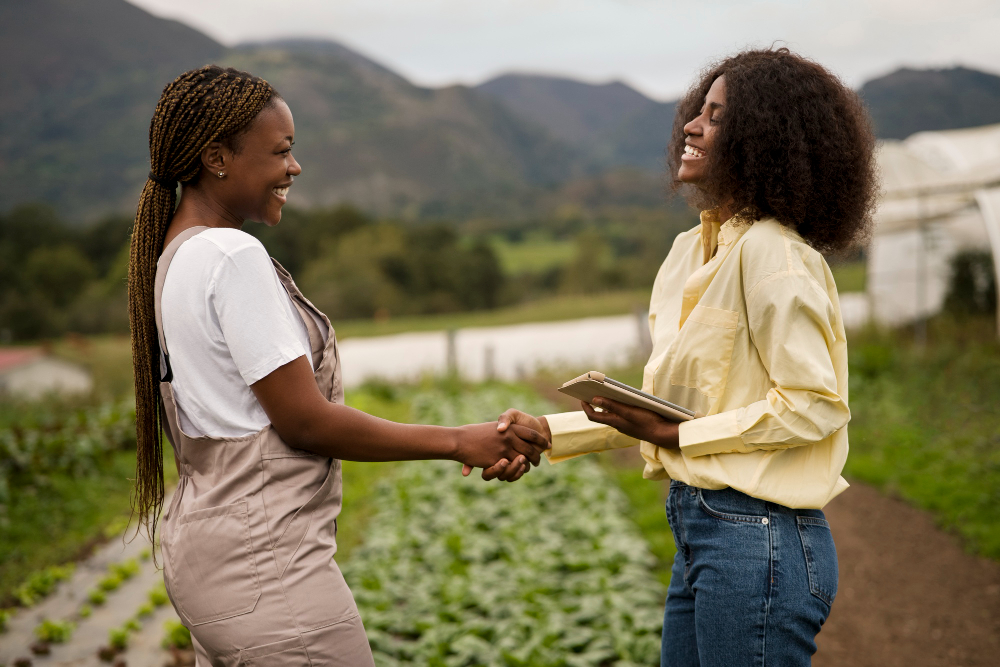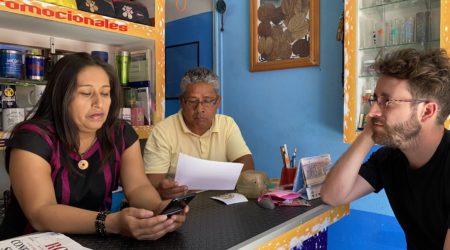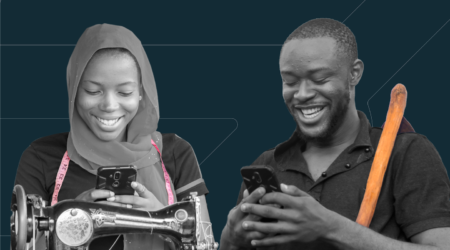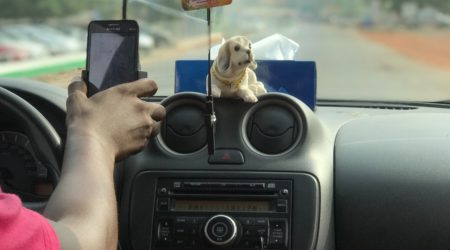Tech and Touch Tools for Climate Resilience and Agricultural Adaptation

For millions of people in emerging markets, climate change is not an abstract debate about emissions or global targets. It is the immediate reality of whether a family can harvest enough food, keep their livestock alive, or earn a living when the rains do not come. A farmer in Kenya who has seen three droughts in five years may ask, “What happens if the next season fails as well?”. A fisher on the coast of South Africa worries that warmer waters and shifting stocks will mean empty nets and wasted fuel. Artificial intelligence is increasingly promoted as part of the solution. With AI, we are now beginning to generate hyperlocal weather forecasts, detect pests before they spread, and track water and grazing conditions from satellites. These are statistical assumptions, not promises, and many of those affected by climate change may not have access to or trust in these predictions. Early warnings mean little if farmers cannot afford seeds or pumps to adapt.
There are proven AI-driven climate tools operating at a global scale. Google’s Flood Hub now provides real-time flood forecasting in more than 100 countries, sending early warnings that have already helped millions of people evacuate safely. Ignitia currently operates in 11 sub-Saharan countries (mostly West Africa), delivering hyperlocal weather forecasts and climate-smart agricultural advice via SMS using a physics-informed AI predictive model. Independent studies show that smallholder farmers who subscribe to Ignitia’s service (at a few cents per day) increase their yields by 10 % compared to those without access, since they can better plan planting and harvesting around rainfall.
AI is also being leveraged in agriculture. PlantVillage’s Nuru tool uses AI in combination with a classifier of images depicting healthy and diseased crop leaves to identify diseases and pest symptoms on crops such as maize, cassava, irish potatoes, and many others. Tens of thousands of smallholder farmers in Kenya and Uganda are leveraging data and designated communication channels to disseminate crop threats and solutions through mobile advisory apps on smartphones (able to be used both offline while in the field and online when connected).
These cases illustrate the upside: AI can turn a flood, drought, or pest outbreak from a surprise into a manageable risk. It can help farmers get ahead of the next climate or pest concern with proven advice, avoiding wasted effort, fishers can find sustainable stocks, or herders plan grazing routes. Predictions have limited value to a single farmer, fisher, or herder, but connecting people and sending out information leads to viable options for action. It’s not just about output of data, it’s about human assessment, communication, and tried and true fixes passed down through the generations.
Why data is not enough: The tech plus touch model
Accurate forecasts and timely alerts are useful, but they rarely change outcomes on their own. Farmers and fishers act when information arrives through trusted people. As a Mercy Corps’ AgriFin blog notes,
like extension (field) agents, who bring not only the tools but also the community connection. Humans are an integral part of any tool implementation because they supply qualities that AI lacks. Humans use empathy, judgment, creativity, and hope in decision-making. These skills build trust, interpret trade-offs, and motivate action in stressful situations like a failed rainy season. Trust often grows when projects start with what communities already use and believe. Pastoralist groups in East Africa first received printed satellite maps of grazing conditions before a mobile app ever appeared. Local leaders helped interpret vegetation signals and water points, then the AfriScout app scaled once people had seen the value on paper.
PlantVillage’s Nuru tool has more than 10,000 users who reported an average increase of 40% in crop yields, but the AI tool is only part of the success story. PlantVillage has a mobile SMS system and online WhatsApp groups spread across 22 of the 47 counties in Kenya. This way, farmers get to interact in real time with plant doctors, researchers and extension officers through WhatsApp groups and online and in-person clinics. This integration of AI tools and in-person connectivity shows the value that Tech and Touch can deliver.
Fisher communities in South Africa tell a similar story. ABALOBI, a Catalyst Fund portfolio company, onboards fishers through local champions. The app then helps with pricing, traceability, and direct sales, but it’s the early trust-building that unlocks adoption and income gains. This is a tech and touch model that builds trust first, then uses data to match catch with demand and document the story of each fish. The pattern is consistent across sectors.
Aquaculture offers the same lesson. AquaRech, another Catalyst Fund portfolio company, combines farm management guidance with access to high-quality feed, a marketplace for offtake, and buy-now-pay-later credit that is recovered when fish are sold. This means farmers can act on recommendations without cash up front. Delivered with on-the-ground training and farmer support, it exemplifies the tech plus touch approach BFA Global is investing in. This full-stack approach improves yields and income stability because it solves the action gap that pure information cannot close.
Another example is MazaoHub, a Catalyst Fund portfolio company, an agtech startup that developed an inexpensive solar-powered soil tester in Tanzania. By using this tool whose data is augmented by AI, 82% of the smallhold farmers credited MazaoHub with increased agricultural production, knowledge and farming income. As their mission states, “We blend AI-powered agronomy tools with human expertise.” MazaoHub provides farmers with affordable, real-time soil analysis and personalized recommendations, a formula for boosting yields and incomes.
Tech provides information that is accurate, reliable and fast. AI can use that data to predict future outcomes. The real impact comes when this information is placed in the hands of the frontline workers who can communicate this data to farmers, fishers, herders and remote users, people who may need a translator, technical assistance or coaching and may not have the basic technological understanding these tools require.
Tech reaching the right people at the right time means AI can drive prediction through forecasts and diagnostics, while touch provides context, confidence, and a pathway to act. When both are present, a message on a screen becomes a real plan for action, and a community moves from alert to activity.
Human-centered AI for a resilient future
Return to the person in the opening scene, the farmer who checks the sky before each planting, the herder deciding whether to move, the fisher who hopes today’s catch finds a buyer. Tools (enhanced by AI in many cases) can predict climate or agricultural hurdles more precisely than ever, but providing information that reaches these end users (often in remote areas that may not have the resources or knowledge to use the tool) and people can act, which requires trusted channels, affordable inputs, working finance, and simple tools in the right language.
BFA Global’s experience through Catalyst Fund companies like Mazao Hub and AquaRech shows that Tech plus Touch models can turn a message on a phone into a plan for the week, reduce losses, and smooth incomes for households on the front line of climate change. Partners who build for this reality, investors, governments, and founders alike, will help communities weather the next season and the one after that.
Tech and the Touch in climate adaptation or agriculture ventures create innovative technology (adopting AI where and when it adds value) and establish touchpoints for our last-mile workers to reach more remote, economically disadvantaged, and less digitally equipped users who get real value from these inventions.



